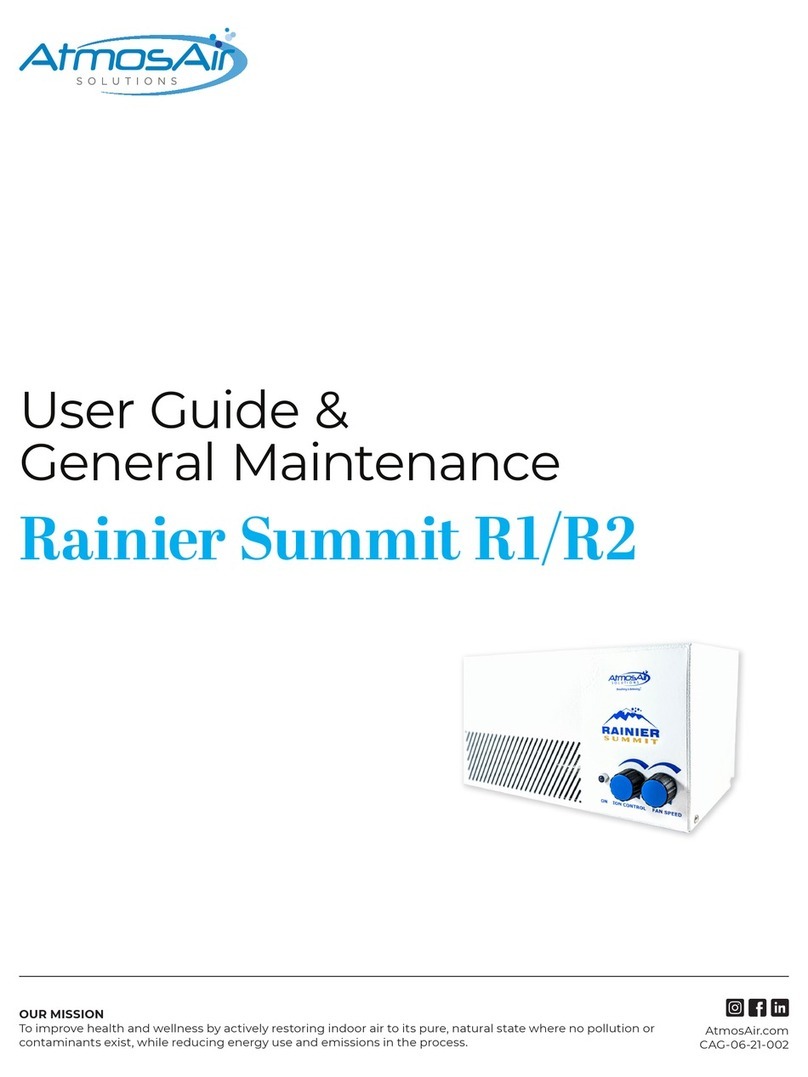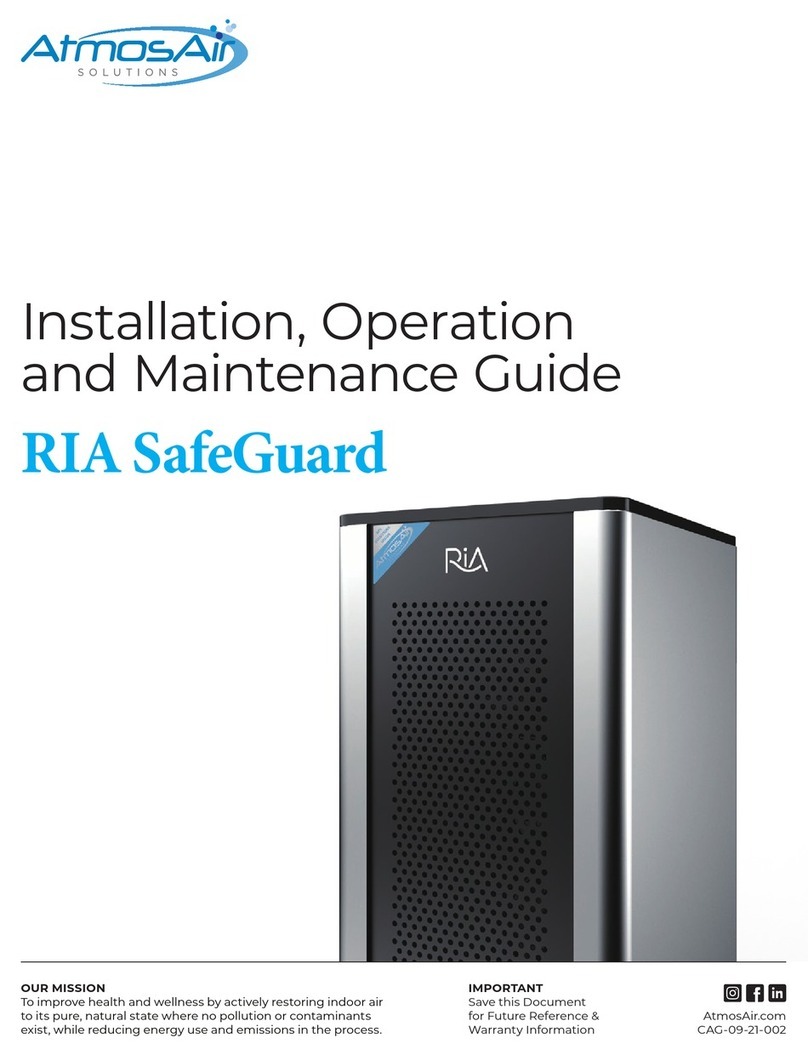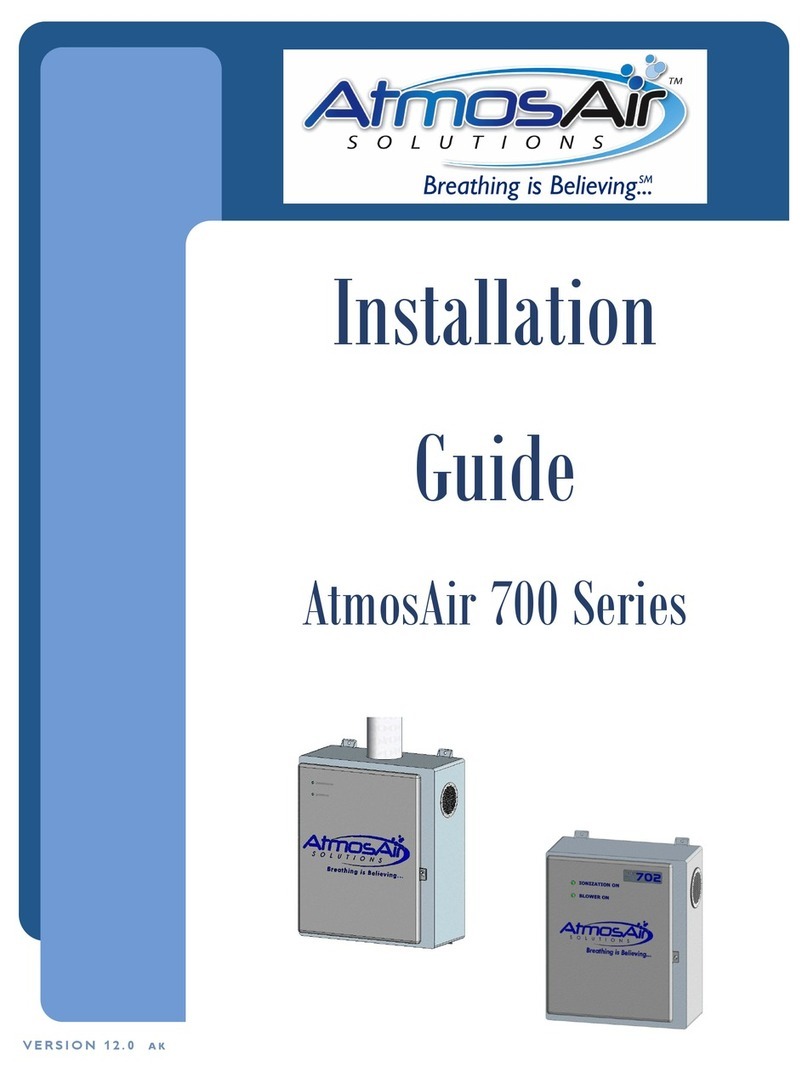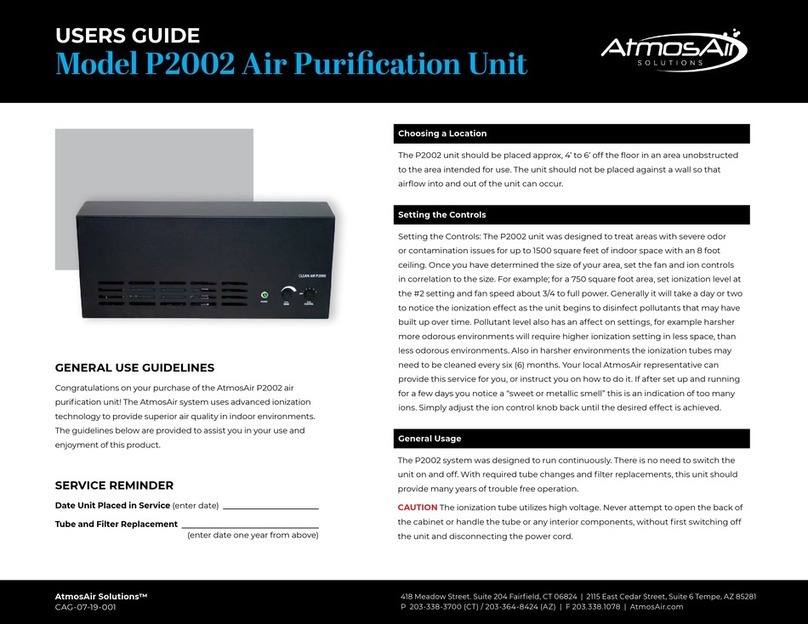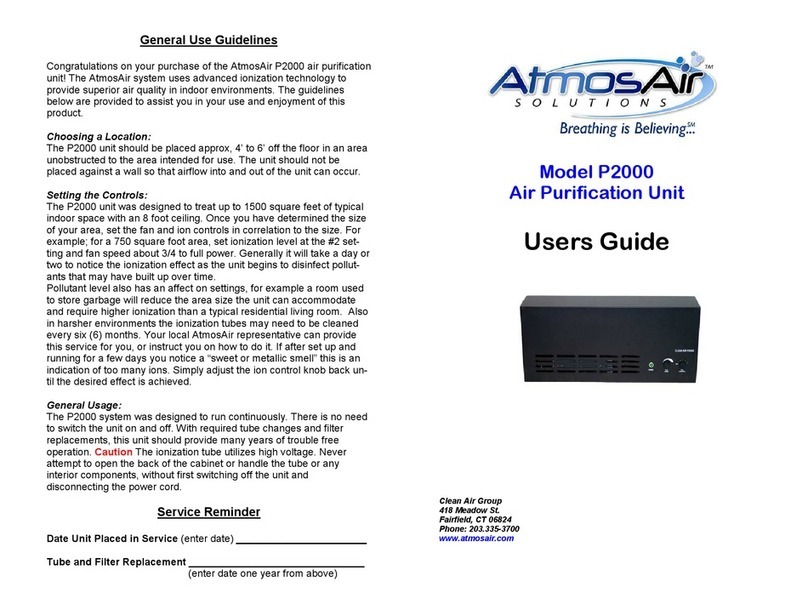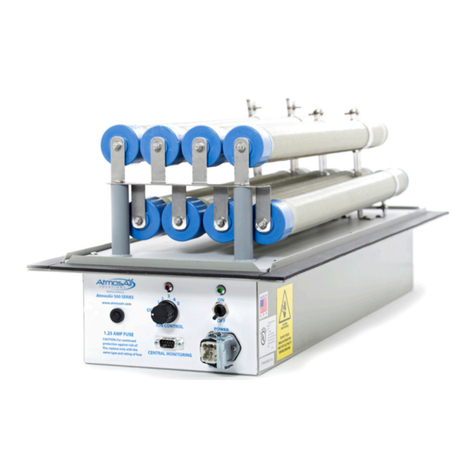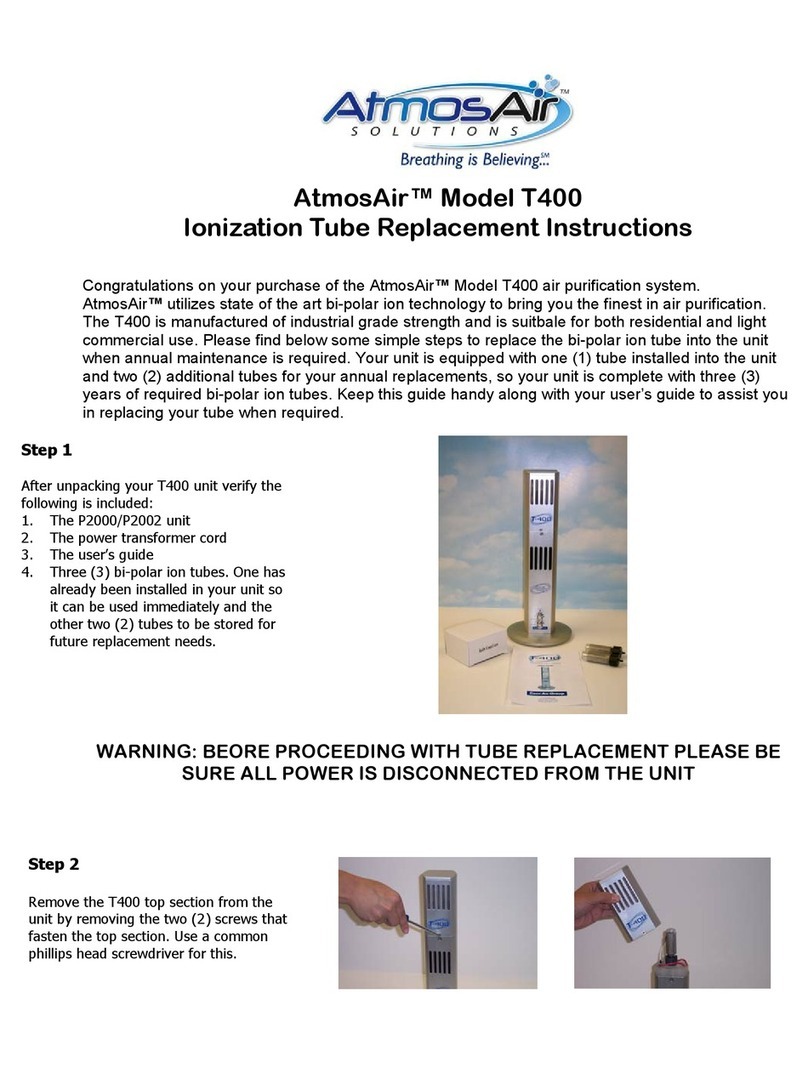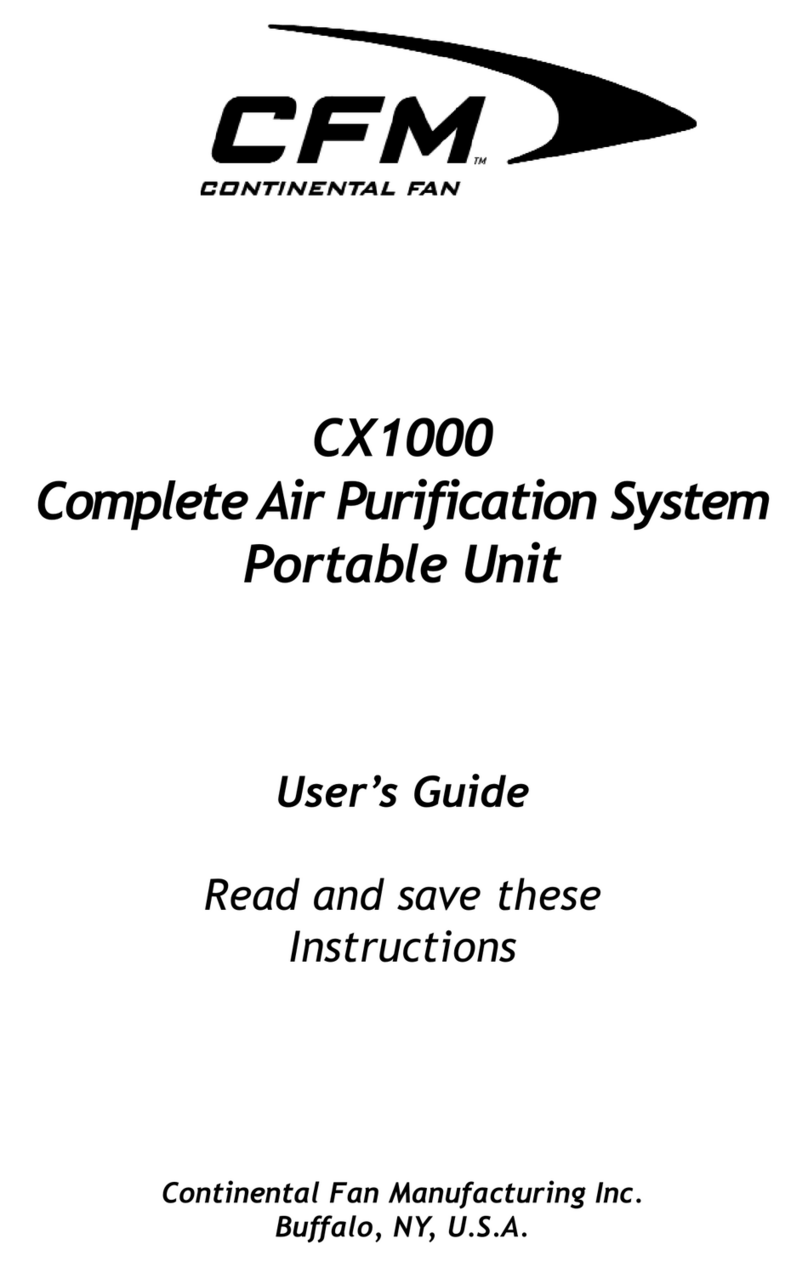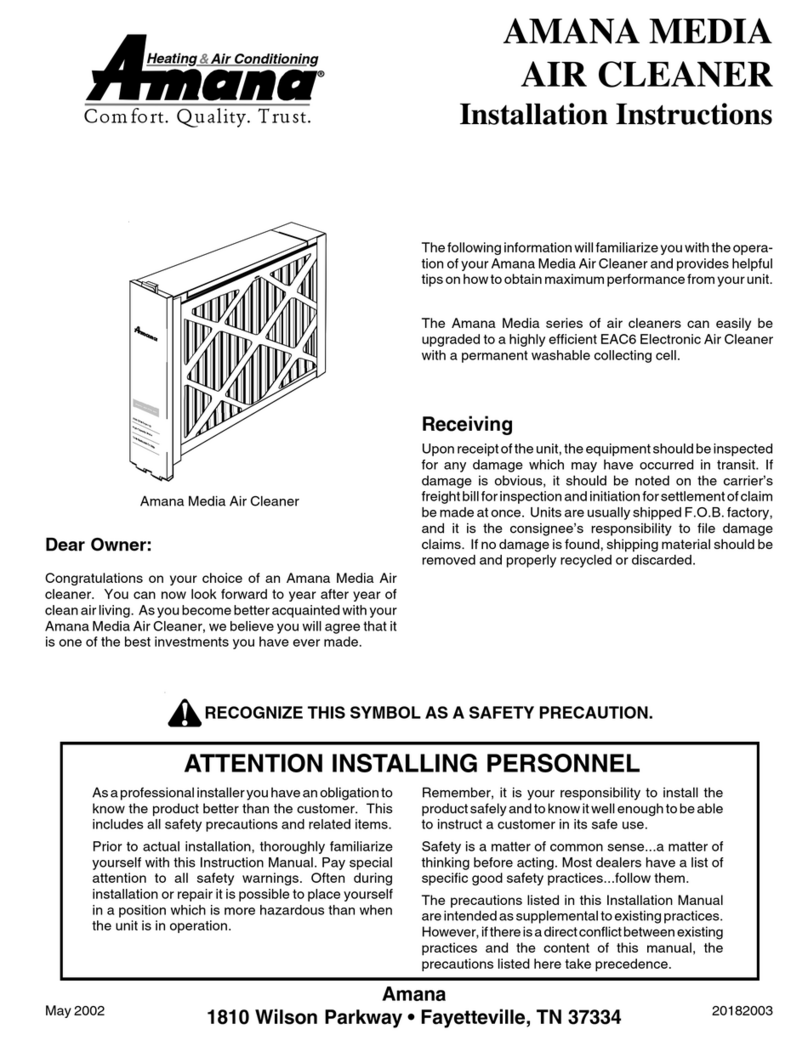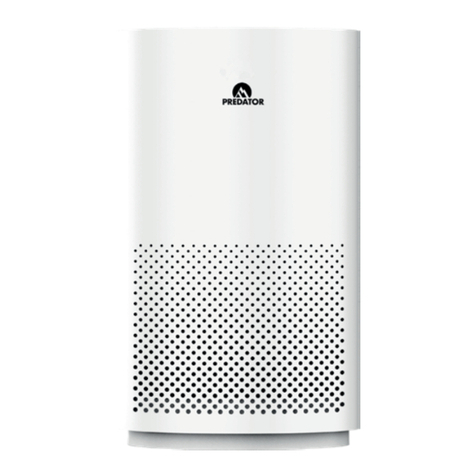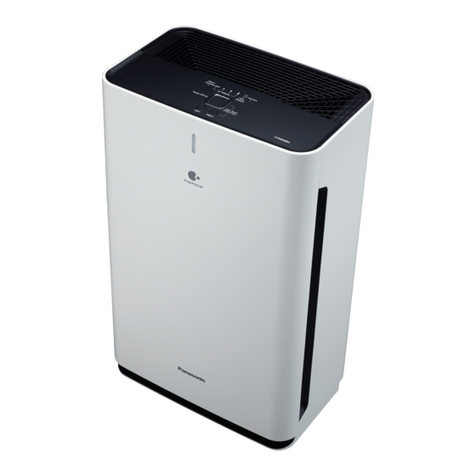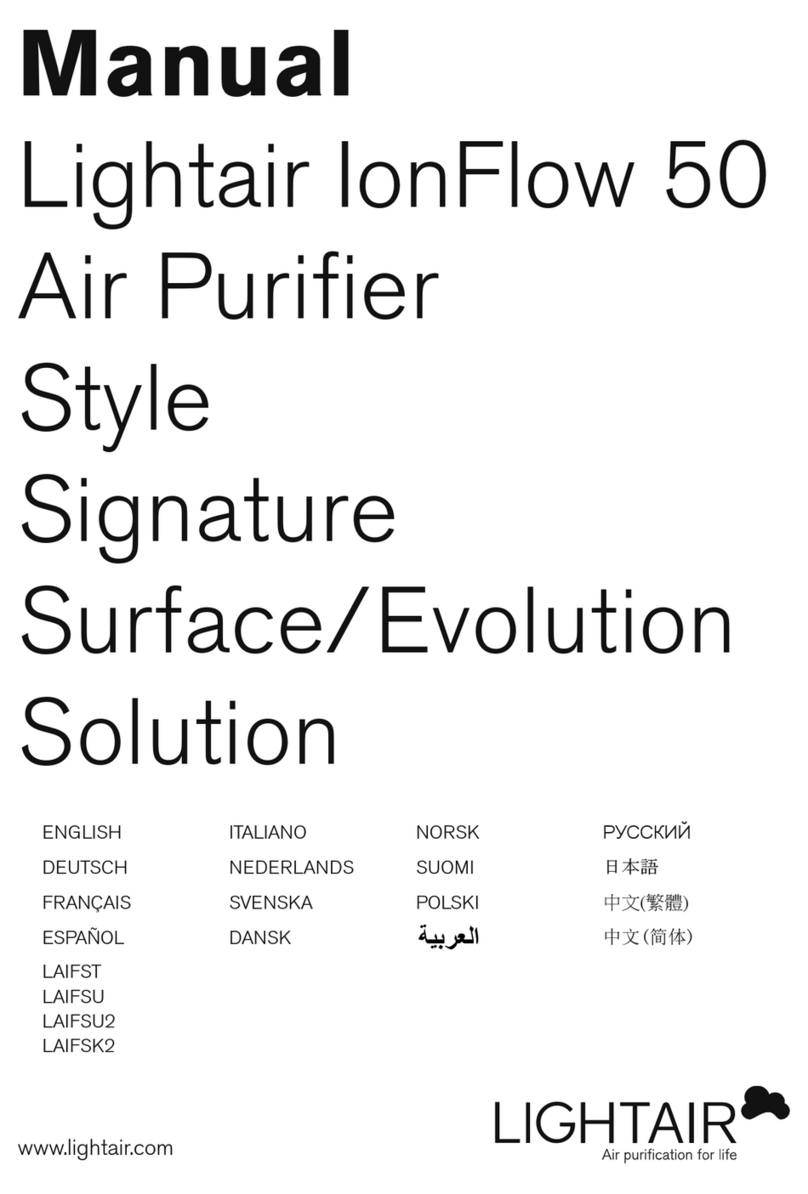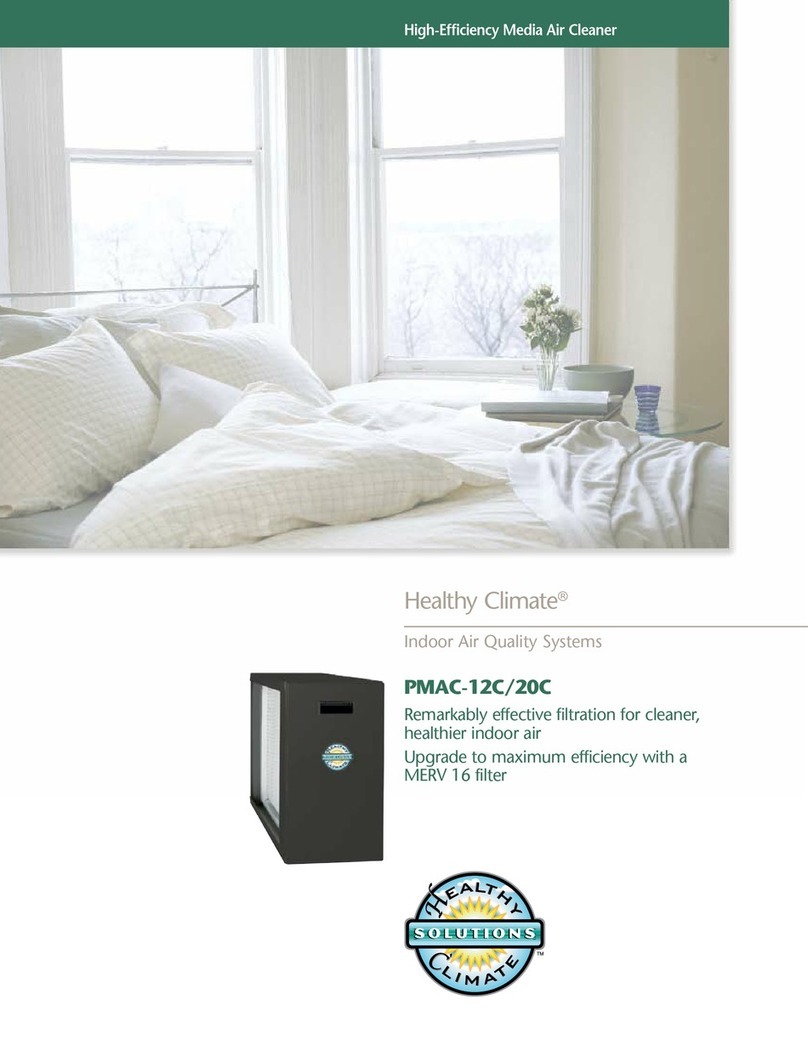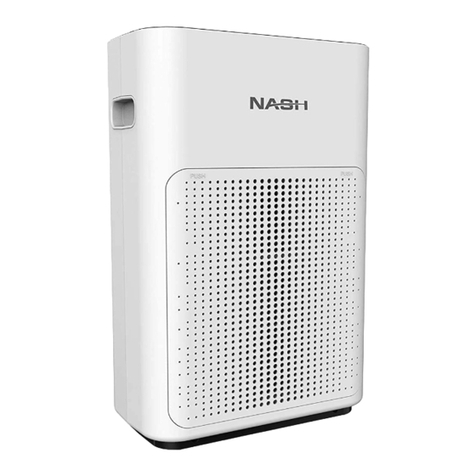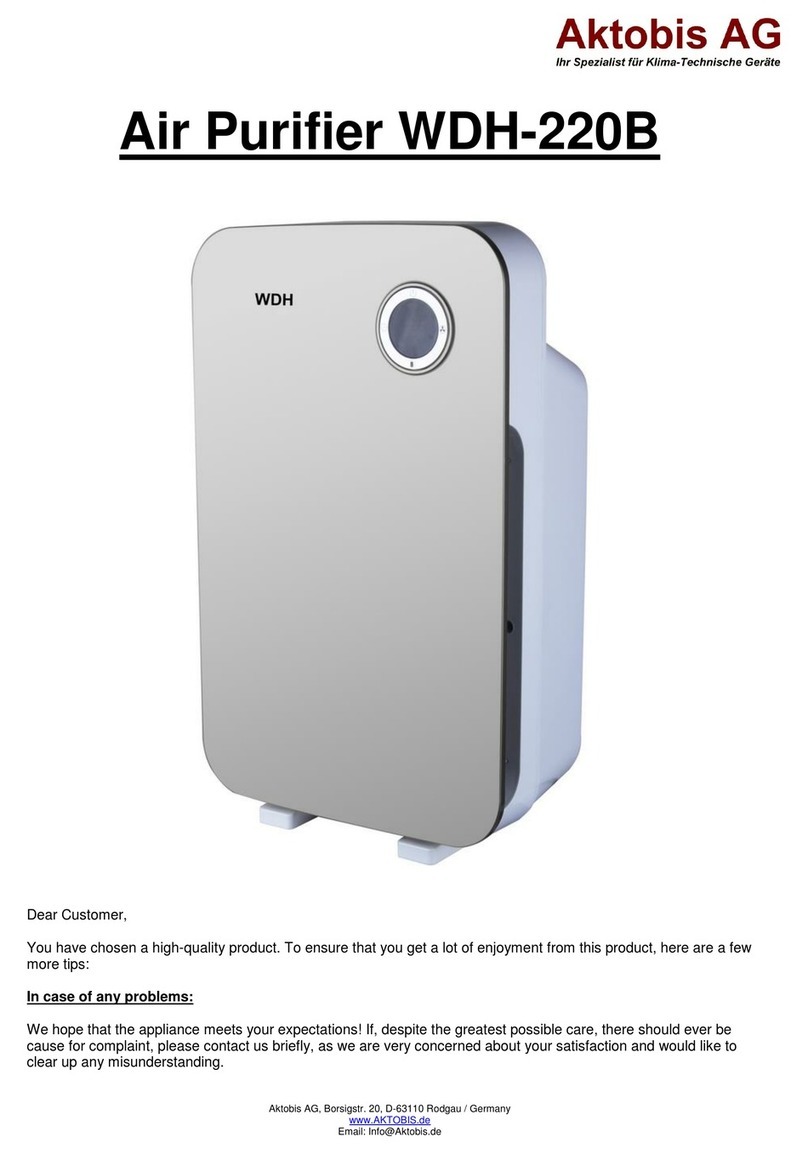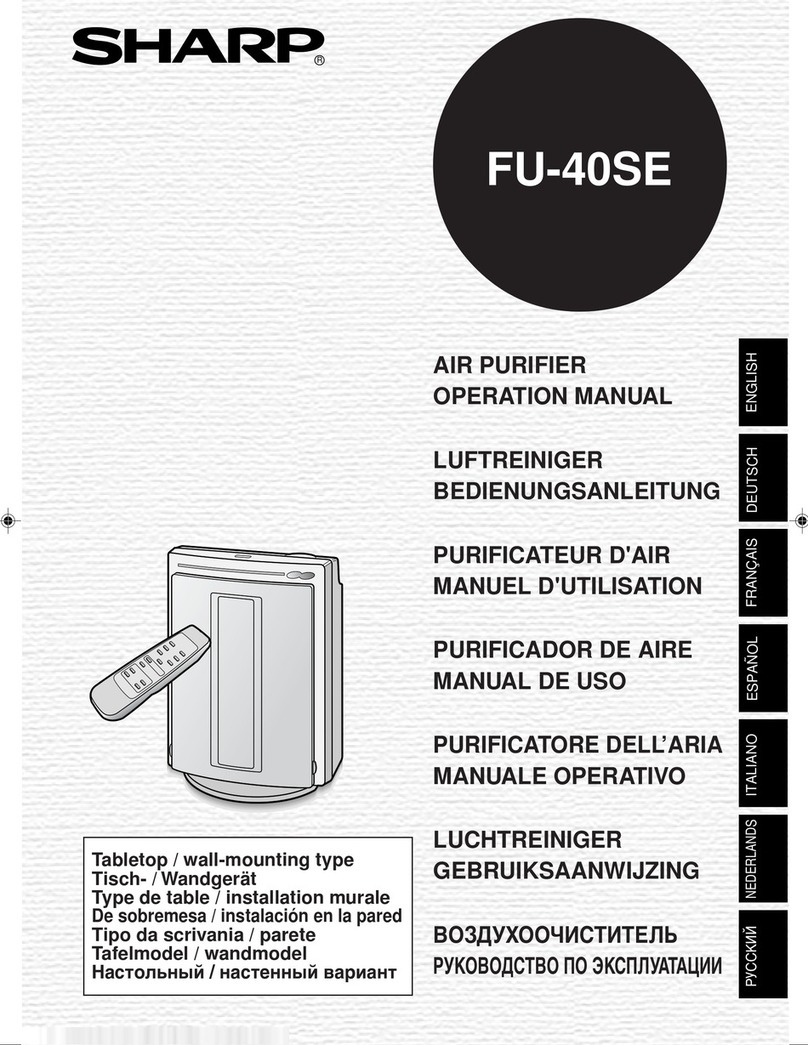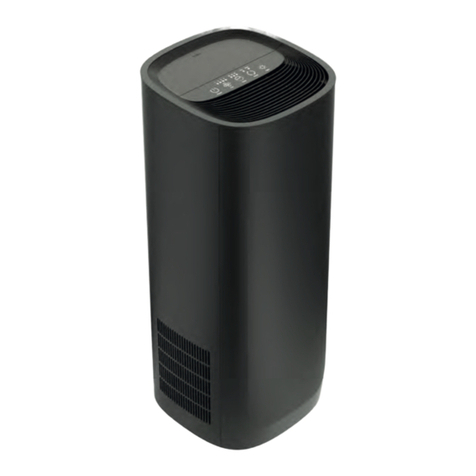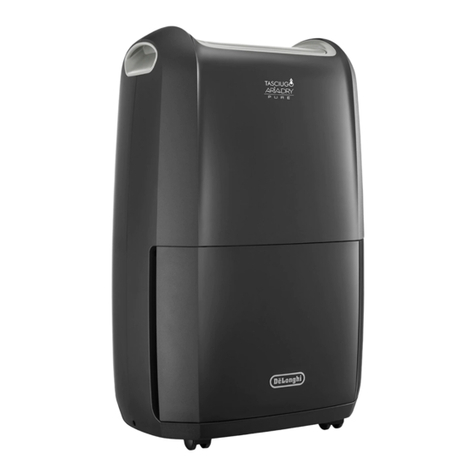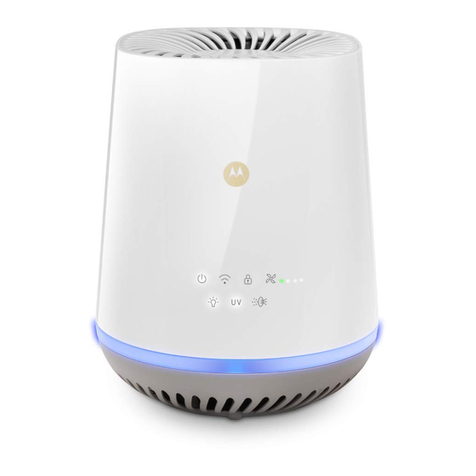
Installation, Operation & Maintenance Guide FC-100/102 Series 8
1-888-MY-AIR11 CAG-06-21-003 AtmosAir.com
■Optional: Check performance using a high voltage probe
(minimum of 5000 V; contact AtmosAir for additional minimum
probe specications) paired with a multimeter. Follow proper
safety procedures for dealing with high voltages. If you are
uncertain, do NOT perform any maintenance with the power on
and, instead, proceed to the next step.
■Disconnect the system from the mains power before
performing any maintenance steps.
■Inspect the unit, plastic tube caps, and tube-mounting plate.
Remove particles and debris from mounting plate, and
thoroughly wipe clean any tracks or grooves that may have
developed in the plate or caps.
■Inspect connections: tightness of all nuts and screws; remove
deposits on the connections using a wire brush - it may be
necessary to remove the tubes for this step.
■It may be benecial to clean the tubes to improve performance.
The tubes can be cleaned using an air compressor for a quick
clean, or more thoroughly with cleaning solutions. Do not
immerse the tubes in water. Ensure that the tubes and mesh
are completely dry before re-installing. Install emitter mesh
equidistant on the composite tube area. Do not dislodge or
move mesh emmiter.
Tube Replacements:
Bi-annual tube inspections are recommended, in addition to
tube replacements once every two years as the production
efciency slowly declines over time due to the stress caused
by plasma and (lack of) cleanliness of the electrodes. Old
or excessively dirty tubes can also put undue stress on the
transformer causing premature failure.
!!!CAUTION!!!
A non-functioning LED light may improperly indicate that the system
is not functioning. Be sure to disconnect from the main power before
performing maintenance or troubleshooting the system.
06 TROUBLESHOOTING
In the event that the system is not functioning, follow these
steps IN ORDER:
1. Check the fuse. If it is blown, replace it with the
appropriately sized slow-blow 1.25 A glass 5 mm × 20 mm
fuse rated at 120 V or 1.0 A fuse rated at 240 V and continue
to the next step.
2. Check that the main power supply is sending the correct
power to the unit.
3. If the system is controlled by an air pressure switch, and/or
a door switch, check that these are not preventing power
from being sent to the system.
4. If power is reaching the unit and it was necessary to
replace the fuse, the next step is to determine whether
there is a fault in the system or a tube. First, to check that
the system’s power is functioning, set the ionization power
knob and the power switch both to the ‘off’ position. Make
sure all personnel are clear of the high voltage tubes, then
re-connect the power supply. Rotate the Ion level dial to #1
and observe the green light. If the light does not turn on,
there is a power delivery problem. If all external sources
of failure are eliminated, the system should be serviced
by a qualied AtmosAir technician. Please see contact
information at the bottom of this page.
The next step is to determine the cause of the failure or
blown fuse. Typically, failures are caused by arcing between
the inner and outer electrodes, or between one electrode
and ground. This often occurs because of damaged tubes
or dirty and/or wet conditions that have allowed carbon
tracking to temporarily connect two electrodes and/or a
grounding point electrically.
5. Inspect the enclosure and tube cap for carbon tracking
evidence.
6. Inspect the tubes for cracks, pitting, or other degeneration
of the dielectric material that causes the dielectric to
fail and arcing to occur. Inspect the tube for black dots
indicating failed dielectric.
Continue on Next page

